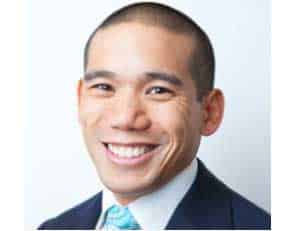
More care would boost economy and health, says report
Catholic health and aged care providers have welcomed a new report revealing that more than $450 million could be saved through better funding of palliative care services and a national strategy on end-of-life care.
The KPMG report found that an annual investment of $365 million will bring Australia’s palliative care system “up to speed”, reducing hospitalisations and producing better health outcomes through the earlier use of quality care.
It found that if people can be supported with palliative care outside of institutional settings, they can live well and die in a place of their choosing such as at home.
Catholic Health Australia Chief Executive Pat Garcia said that despite Australia ranking second in the world for the quality of its palliative care, only half of the people who would benefit are able to access it.

“Referrals to palliative care are absent or late, and only 14 per cent of people die at home, even though studies suggest between 50-70 per cent want to,” Mr Garcia said.
“There are many opportunities, often missed, to improve access and quality of palliative care in Australia. Funding and resources were identified by our members as the largest barrier to achieving access to quality palliative care.
“Fragmentation of service, workforce shortages and palliative care awareness both within the health care workforce and in the public arena are also barriers to achieving improvements.”
The report commissioned by Palliative Care Australia calls for a full-time Palliative Care Commissioner and recommends increasing funding by $240 million each year for improving home and community-based palliative care, $75 million annually into residential aged-care facilities, and $50 million to expand palliative care support in hospitals.
Professor David Kissane, the chair of Palliative Medicine Research at the University of Notre Dame Australia said the report makes a clear argument about “the need for improved health literacy about palliative care”.
Villa Maria Catholic Homes chief executive officer Sonya Smart said an overhaul of the Australian palliative care system was “desperately needed”.
“We want people to experience the best available support at their end of life, and to reduce the need for emergency department presentations and deaths during transfers to and from services,” she said. “Aged care has a very large role to play in the provision of palliative care.
“At the end of the day, we know in Victoria where our homes are located we’re underfunded for palliative care.”
Now ‘no excuse’ for inaction on palliative care
Director of Hope Branka van der Linden said there was now no excuse for governments to refuse to invest in palliative care.
“So far, the Victorian and West Australian governments have ignored the need to improve quality of and access to palliative care, and chosen the ‘simpler’ option of legalising euthanasia and assisted suicide instead,” she said.
“The perceived cost of improving end-of-life care and offering proper end-of-life choices were seemingly too great. Now, a major accounting firm has shown that it is actually more cost-effective for governments to make significant investments in palliative care.
“They have no more excuses to delay.”
Palliative Care Australia chief Rohan Greenland said there is a distinct lack of knowledge in what services are available and how to access them.
“There is limited coordination between the states, territories and the Commonwealth to ensure integrated responsive services which can meet demand and a real need to address inadequacies in specialist numbers,” Mr Greenland said.
Missing out on care
- Palliative medicine specialists number half of what is expected under a minimum model of care
- Less than two percent of people who died in the year 2017-18 received a Medicare-funded palliative care home visit
- 1 in 50 residents in an aged care facility receives palliative care under the Aged Care Funding Instrument
Source: Investing to Save – The economics of increased investment in palliative care in Australia
Related articles:
Federal grant for Sydney palliative experts
Monica Doumit: How can this be a priority?
Enough lies, start listening to our palliative carers
